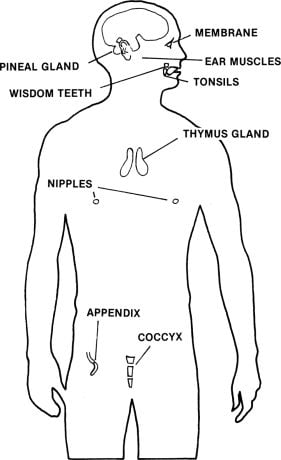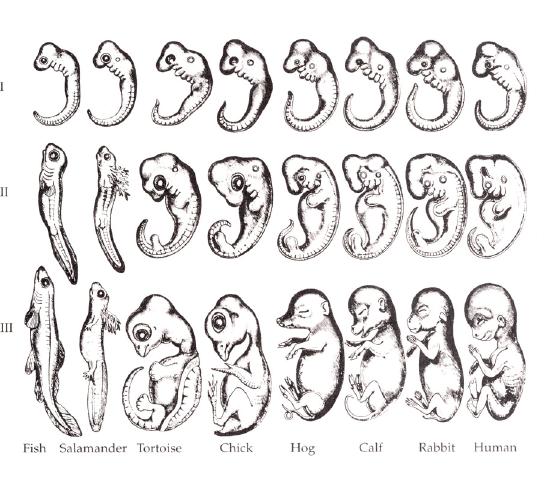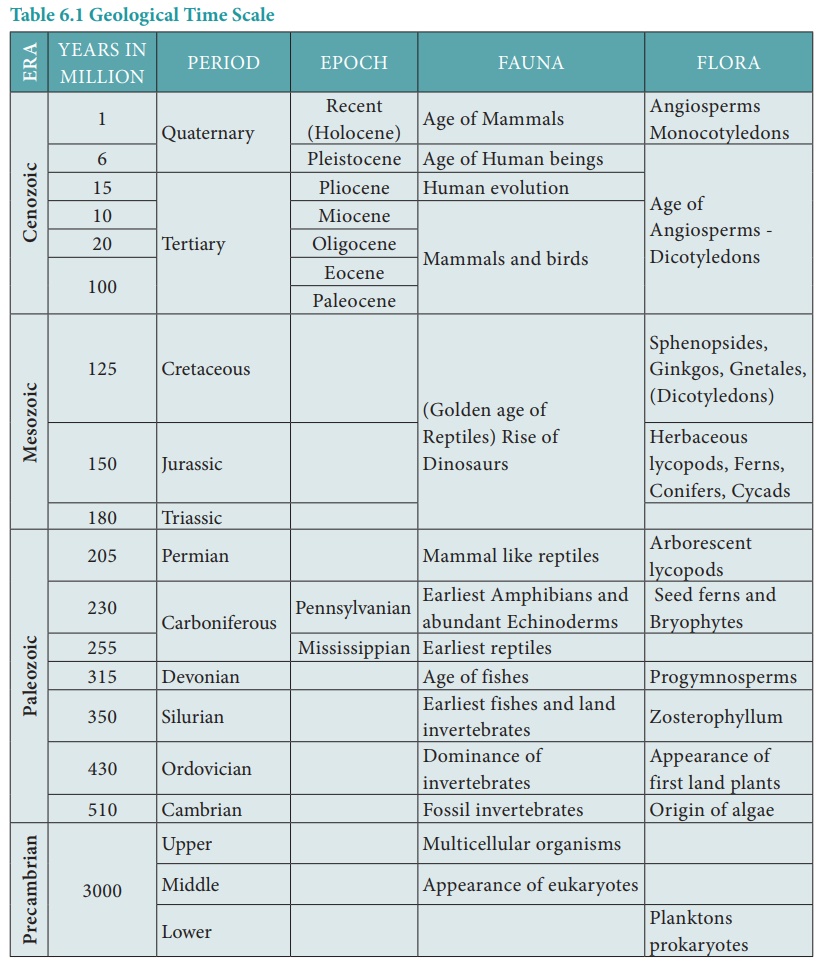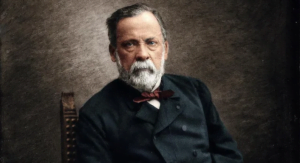Evolution :-
It is defined as a modification, In which a simple organism is changed into complex one. It is a very slow and irreversible process which can not be absorbed in a life time.
- It is the change in characteristics of a species over several generations and relies on the process of natural selection. The theory of evolution is based on the idea that all species are related and gradually change over time.
- Evolution relies on there being genetic variation in a population which affects the physical characteristics of an organism. Some of these characteristics may give the individual an advantage over other individuals which they can then pass on to their offspring.
Evidences of Evolution :-
There are many evidences which prove that the evolution has taken placed.
Indirect Evidences :-
All those evidences which indirectly indicate the process of evolution are classified as follows –
- Evidences from Morphology.
- Evidences from comparative Anatomy.
- Evidences from Taxonomy.
- Evidences from Zoogeography or Biogeography.
- Evidences from Embryology.
- Evidences from Physiology and Biochemistry.
1. Evidences from Morphology :-
The morphological feature which are common in differences groups of organism are the strong evidences.
As for example – The presence of skin, epidermal derivatives, eyes, nostril etc. in different groups of organism.
- The different in the morphological features in the different groups of animals is due to adaptation.
2. Evidences from comparative Anatomy :-
Homology and Analogy :-
Homologous organs are the organs having similar origin and structure but different functions.
Examples – Fore limbs of horses, hand of human, flippers of whale, wings of birds etc.

- Homologous organs are examples of diversent evolution or allo – parasitic speciation.
- The analogous organs have dissimilar origin but similar function. Examples – Fines of fishes and flippers of whales, ptagia of bates and wings of bird or wings of insects etc.

- The analogous organs having same types of structure and function are also known as homoplastic organs.
- The analogous organs or homoplastic organs are the example of conversent evolution or sympatric spaciation.
Vestigial organs :-
The presence of vestigial organs within the body is the strong evidence of evolution. The vestigial organs are those organs which have become non-functional and reduces in the body, but they are still develop and functional in other related group.
- There are more than 180 vestigial organs which are present in a human. These vestigial organs are still developed and functional in other primates.
- Human body is considered as museum of vestiges. The important vestigial organs are – Plica semilunaris ( vestigial nictitating membrane. ) , wisdom teeth ( third molar ), coccyx ( last caudal vertebra ) etc.

Atavism :-
Atavism is the condition in which ancestral characters are retained by the new born. presence of the ancestral characters such as small tail, long and hard hair etc. in the new born indicates the human evolution.
Connecting link:-
Connecting links are those organisms which possess the characters of two different groups. There are the strong evidences such as –
( a ) Proterospongia :- Connecting link between protozoa and sponges.
( b ) Neopilina :- Connecting link between mollusca and annelida.
( c ) Euglena :- Connecting link between animals and plants.
( d ) Peripatus :- Connecting link between arthropoda and annelida.
( e ) Hemichordata :- Connecting link between chordates and non-chordates.
( f ) Protopterus :- Connecting link between fishes and amphibia.
( g ) Archaeopteryx :- Connecting link between birds and reptiles.
( h ) Monotremata :- Connecting link between mammals and reptiles.
3. Evidences from Taxonomy :-
The taxonomy is based on systematic ( evolutionary relationship between different taxa or group ). Without evolutionary relationship the formation of different group or taxa and their arrangement are not possible.
4. Evidences from Zoogeography :-
Alfred Russel Wallace divided the world into 6 large Bio – geographical regions on the basis of specific type of Flora and Fauna confined to these regions.
The fossil records are similar in different Bio – geographical regions, therefore the presence of present-day Flora and Fauna in these regions are the examples of evolution.
The Biogeographical regions are – Neotropical, Nearatic, Palaeartic, Oriental, , Australasian, Ethiopian.
The Bio – geographical regions are isolated from each other due to the presence of large barriers such as Mountain, Ocean, Desert etc.
5. Evidences from Embryology :-
The process of gametogenesis, general structures of male and female gametes, process of fertilization, Cleavage, formation of germ layers and organogenesis proves The evolutionary relationship among different groups of vertebrates and invertebrates.

The differences among these groups have developed due to the evolution.
Biogenetic Law or Recapitulation Hypothesis :-
The Biogenetic law was proposed by Haeckel. According to this law the embryonic stage of development form repeat or recapitulate the adult characters of lower forms. This hypothesis is now discarded.
According to Von Baer the embryonic stages of the hair and lower forms have some common characters. It is a strong evidence of evolution.
6. Evidences from Physiology and Biochemistry :-
( a ) Protoplasm similarity :-
The protoplasm in different group of organism have the same composition and function.
( b ) Enzyme similarity :-
The enzymes such as tripsin release in different groups of animal ( protozoa to human ) has the same types of structure and function.
( c ) Hormonal similarity :-
The hormones such as Thyroxin is release in all the vertebrates ( fishes to mammals ), it has the same structure and function in these groups.
( d ) Nucleic acid similarity :-
Similar type of nucleic acid in different organisms proved the process of evolution.
( e ) Phosphagens :-
phosphagens are energy-rich compound present in the muscles , these are Arginine phosphate, Creatinine phosphate. The hemichordates have both arginine and Creatinine phosphate.
( f ) Plasma and Serum protein :-
Plasma proteins present in different groups of vertebrates are almost of same types.
The serological test or precipitin test has proved that sirenia ( Sea cow ) and Proboscidea ( elephant ) are closely related. It also proved the close relationship between chimpanzee and human.
Direct evidences :-
The paleontology ( study of fossils ) provides direct evidences of evolution.
The term fossil has been derived from the Latin word fossilis means to dig – up.
- Fossil provides information regarding the part of an organism.
- Fossils are mainly found in sedimentary rocks, few fossils are also present in Igneous rocks, Metamorphic rocks are devoid of fossils.
- The law of superposition in paleontology states that the fossils present in the lower strata are older than those present in upper str6ata.
Geological time scale :-
The Geological Time Scale is a chronological model used to organize Earth’s history.
- Dividing it into eons, eras, periods, and epochs based on significant geological and biological events.
- This scale helps geologists, paleontologists, and other Earth scientists understand the timing and relationships of events in Earth’s history.




